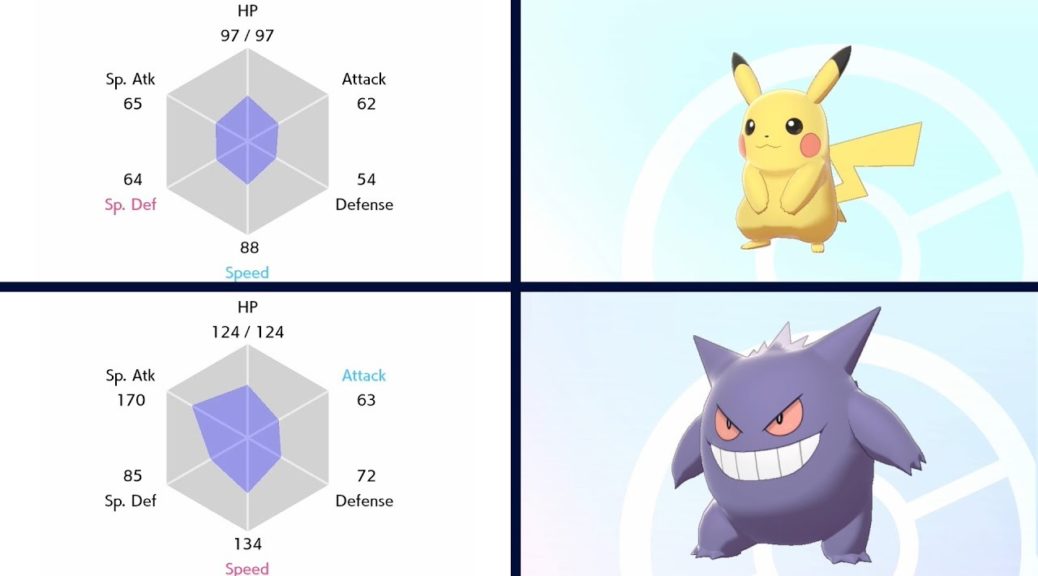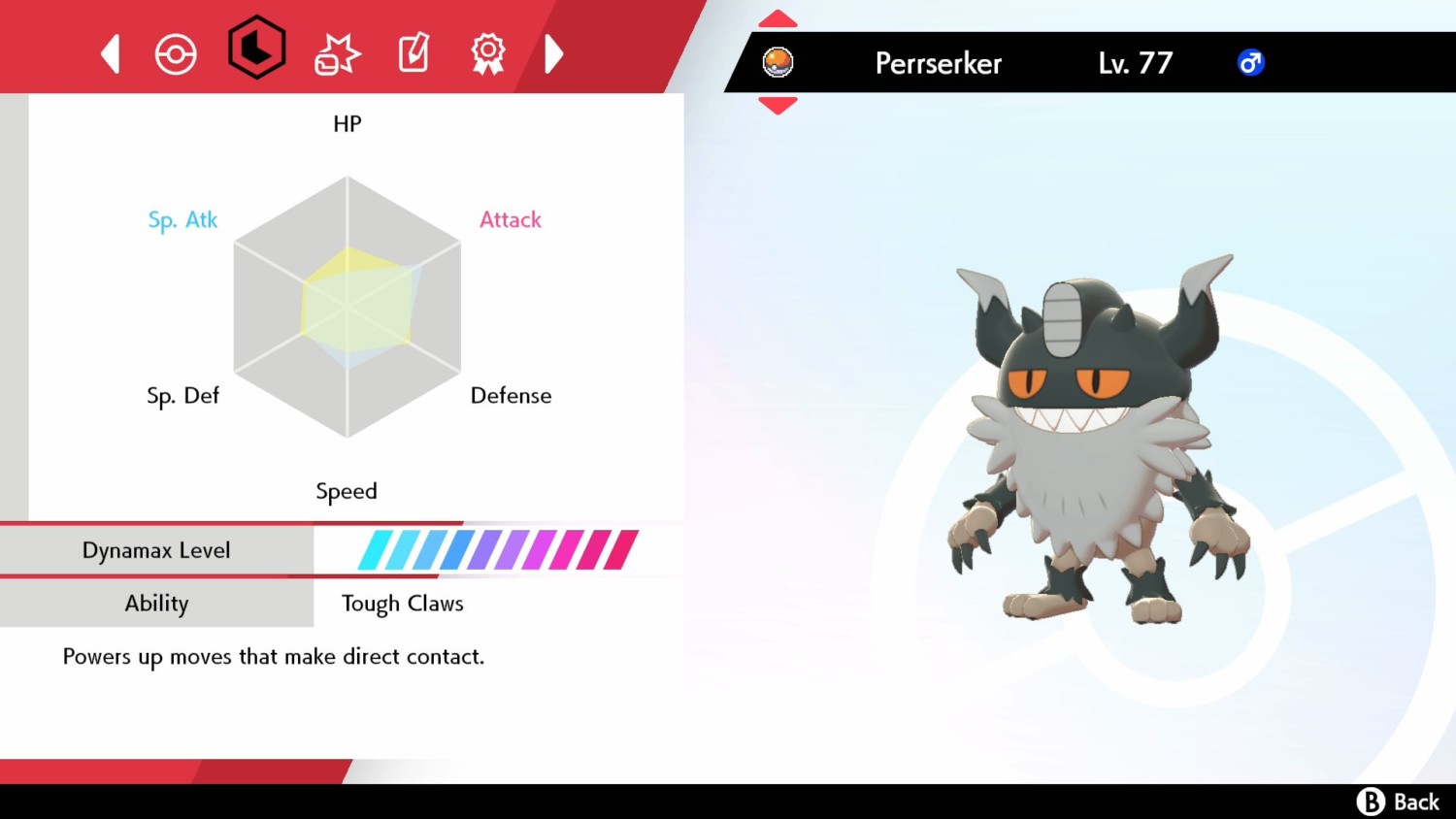
Guide: EV Training In Pokemon Sword And Shield
Pokemon players who are interested in its competitive scene will likely be intimately familiar with the concept of maximizing a Pokemon’s Effort Values, otherwise known as EV Training.
With Pokemon Sword And Shield‘s first online competition coming up, players looking to participate may want to consider prepping their teams for battle with some EV Training. To help players with this task, we have put together a quick guide for EV Training in Pokemon Sword And Shield. It includes details on where to find Power Items, Vitamins, as well as a new method of EV Training through Pokejobs.
Even if they are not interested in participating, EV Training can also be quite useful for players struggling with lategame content such as Raids or the Battle Tower. In the case of the Battle Tower, opponent Pokemon are usually programmed with maxed out Effort Values, which may make EV training essential in order to get up to the higher ranks.
Check out the guide below.
What Are Effort Values?
For those who are completely unfamiliar, Effort Values (EVs) are basically a type of “Experience Points” for Pokemon stats. They are normally earned through defeating opponent Pokemon, with different species awarding EVs to different stats.
- Defeating one Caterpie in battle will award 1 EV to a Pokemon’s HP stat.
- Defeating one Oddish in battle will award 1 EV to a Pokemon’s Sp.Attack Stat.
A Pokemon with more EVs in a particular stat (e.g. Attack) will have a higher value in that stat compared to another Pokemon of the same species at the same level.
- Level 50 Pikachu with 0 EVs in Attack: 75 Attack
- Level 50 Pikachu with Max EVs in Attack: 107 Attack
As you can see with the above example, proper EV training can improve a Pokemon’s potential in battle by quite a bit. However, there are a number of limitations to EV training that players should note before they get started.
- A single Pokemon can only have a maximum of 510 EVs across all of its stats.
- A single stat (e.g. Attack) can only have a maximum of 252 EVs in it.
- The conversion rate for EVs is 4 EVs for a single stat point.
Although the games do not tell you exactly how many EVs your Pokemon have in each stat, you can get a rough estimate by checking your Pokemon’s stat page (Picture from Serebii):

- Press “X” on the stat page to see the EV “hex”
- EV levels are indicated by the inner “hex” which is yellow at the start.
- When the yellow “hex” turns light blue (as in the image), that means the Pokemon’s EVs are totally maxed out.
You can also check if your EVs are maxed out by showing your Pokemon to a lady in one of the houses in Hammerlocke. She will give you a special Ribbon if your Pokemon has max EVs.
Raising EVs With Items
Aside from battling normally, certain consumable items can also be used to raise a Pokemon’s EVs.
- Vitamins: Award 10 EVs to specific stat of a Pokemon (Bought from Hammerlocke BP shop or Wyndon Pokemon Center)
- HP Up: 10 HP EVs
- Protein: 10 Attack EVs
- Iron: 10 Defence EVs
- Calcium: 10 Sp. Attack EVs
- Zinc: 10 Sp. Defence EVs
- Carbos: 10 Speed EVs
- Wings: Award 1 EV to specific stat of a Pokemon (Sparlking items on Route 5 Bridge)
- Health Wing: 1 HP EV
- Muscle Wing: 1 Attack EV
- Resist Wing: 1 Defence EV
- Genius Wing: 1 Sp. Attack EV
- Clever Wing: 1 Sp. Defence EV
- Swift Wing: 1 Speed EV
Originally, players could only add up to 100 EVs using Vitamins. However, this limitation was removed in Pokemon Sword And Shield. Players are now able to max out their EVs by Vitamins alone if they so choose, although this will require lots of BP and Pokedollars.
If you made a mistake while EV training, or want to redo your EV spread, you can also reduce a Pokemon’s EVs using berries.
- EV Berries: Reduce a Pokemon’s EVs by 10 in a specific stat, but increases Happiness
- Pomeg Berry: -10 Hit Point EVs
- Kelpsy Berry: -10 Attack EVs
- Qualot Berry: -10 Defence EVs
- Hondew Berry: -10 Sp.Attack EVs
- Grepa Berry: -10 Sp.Defence EVs
- Tamato Berry: -10 Speed EVs
NOTE: If a Pokemon has more than 100 EVs in a particular stat (e.g. 252 in Attack), feeding it an EV Berry will instantly reduce it to 100 EVs (e.g. Kelpsy Berry). After this, the EV Berries will reduce EVs by 10 as per the description above. To reduce EVs in a particular stat from Max to Zero, you will therefore only need 11 berries in total.
Training EVs Through Battle
If you do not wish to use items to max out your EVs, you can also earn them the old fashioned way through battling. The typical method of doing this is to find a location that spawns Pokemon which award EVs to the specific stat of choice, then keep battling them over and over again.
While doing this, players may also choose to use Power Items. These items increase the number of EVs earned through battle, and can be bought from the Hammerlocke BP shop.
- Macho Brace: Doubles the amount of EVs gained but cuts Speed in half
- Power Weight: +8 HP EVs after each battle, regardless of the Pokémon fought, but cuts Speed in half.
- Power Bracer: +8 Attack EVs after each battle, regardless of the Pokémon fought, but cuts Speed in half.
- Power Belt: +8 Defence EVs after each battle, regardless of the Pokémon fought, but cuts Speed in half.
- Power Lens: +8 Special Attack EVs after each battle, regardless of the Pokémon fought, but cuts Speed in half.
- Power Band: +8 Special Defence EVs after each battle, regardless of the Pokémon fought, but cuts Speed in half.
- Power Anklet: +8 Speed EVs after each battle, regardless of the Pokémon fought, but cuts Speed in half.
Generally, it is recommended to use a Power Item of a specific stat (e.g. Power Bracer for Attack) and then farm a specific Pokemon that awards EVs of that same stat (e.g. Skwovent awards 1 EV to Attack) until the stat is maxed out.
If you are looking for some good farming locations for each stat, Pokemon fansite Serebii suggests the following:
- Skwovet on Route 1 for HP
- Chewtle on Route 2 Lakeside for Attack
- Rolycoly in Galar Mine/Giant’s Cap for Defense
- Gastly in Watchtower Ruins for Sp.Attack
- Gossifleur on Route 3 for Sp.Defense
- Rookidee on Route 1 for Speed
You could also create your own training regiment by referring to this list of Pokemon by EV Yield and tailoring your farming to your needs.
That said, at only 9 EVs (maximum 11) per defeat, this strategy might still be quite time consuming. Luckily, there is one more way to increase your EV yield through battle, and that is something called Pokerus.
Pokerus
Pokerus is a unique and rare “status condition” that Pokemon may get randomly while battling wild Pokemon. In lore, it is a “Pokemon Virus” that enhances a Pokemon’s growth. What this actually means is that any EVs a Pokemon infected with Pokerus earns will be doubled. This includes the values earned after adding in a Power Item.
- Defeat 1 Skwovet while holding a Power Bracer >>> +9 Attack EVs
- Defeat 1 Skwovet while holding a Power Bracer AND infected with Pokerus >>> +18 Attack EVs
With Pokerus in play, you would only need to defeat 14 Skwovets to fully max out a Pokemon’s Attack EV. Apply that to any other stat, and you should have a much easier time maxing out a Pokemon’s EVs.
If your Pokemon has been infected with Pokerus, the Pokemon Center Nurse will let you know with special dialogue the next time you visit the Pokemon Center. Pokerus is highly contagious, and will spread just by having infected and non-infected Pokemon in the same party, making it easy for everyone to benefit from its effects.
Be warned however, that Pokemon will “recover” from Pokerus within a day if left in your party. In this “recovered” state, they will no longer be able to infect other Pokemon with Pokerus, although they will still earn double EVs.
That said, Pokemon infected with Pokerus will stay infected forever if kept in the PC. As Pokerus is fairly rare, it is recommended to keep at least one infected Pokemon in your PC so that you do not lose it.
PokeJobs
In Pokemon Sword And Shield, there is one more way to earn EVs, and that is through Pokejobs. As you may know, Pokejobs is a feature in Pokemon Sword And Shield that allows you to send Pokemon kept in the PC on “jobs” which they can complete for various rewards.
After earning enough Gym badges or completing the main story, you will gain access to “Seminars” which boost specific stats of a Pokemon. These “Seminars” reward 4 EVs for every hour the Pokemon is assigned, or 96 EVs for 24 hours.
- HP seminar in session!
- Attack seminar in session!
- Defense seminar in session!
- Sp. Atk seminar in session!
- Sp. Def seminar in session!
- Speed seminar in session!
Notably, the amount of EVs earned from these sessions is affected by whether the Pokemon has a Power Item equipped, or is infected with Pokerus. To use the Attack Seminar as an example:
- 1 Day Attack Seminar with Pokerus: +128 Attack EVs
- 1 Day Attack Seminar with Power Bracer: +288 Attack EVs (Maxed Out)
- 1 Day Attack Seminar with Pokerus AND Power Bracer: +432 Attack EVs (Maxed Out)
If you are interested in a passive way to increase EVs without battling, using these Pokejob seminars may be a good alternative.
What do you think of this guide? Let us know in the comments.
